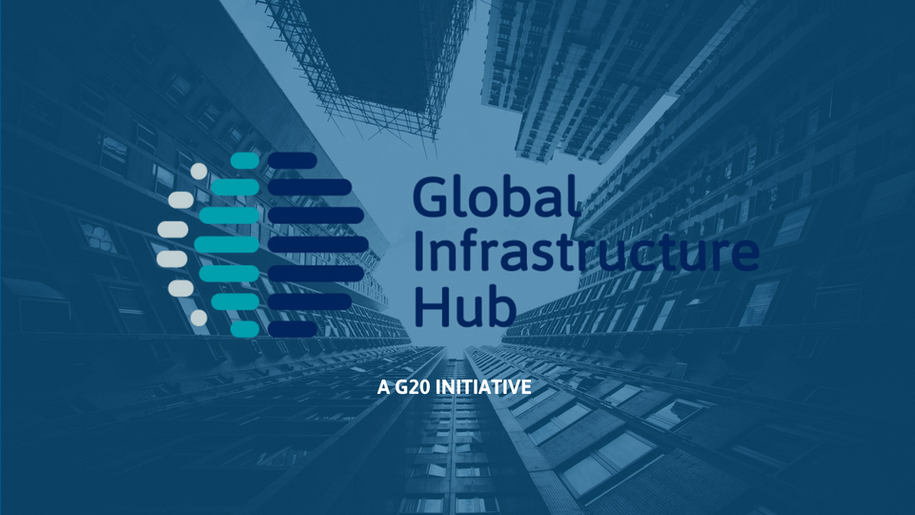928 results found
Featured results



More results
For this year s edition, we reached out to more than 10,000 people in 10 major global cities to ask about their everyday experiences with infrastructure services. How satisfied and safe do they feel with their roads and bridges, rail services and utilities? How engaged are they in the decision-making processes for new projects that can improve lifestyles and drive new economic growth?

Public-private partnership (PPP) contracts are long-term and they may have a duration of 20 to 30 years or more. Today, where technologies and social priorities (such as views on climate change and sustainability) are changing at an accelerated pace, it perhaps comes as no surprise that changes to PPP contracts through renegotiations are common.
As 2018 comes to a close, we would like to take this opportunity to thank you for your support this past year. The Global Infrastructure Hub (GI Hub) had an ambitious agenda for 2018 and we are pleased to say that, with the help of our partners and stakeholders, we have been able to achieve some important milestones.
One of the primary responsibilities of governments the world over is to provide public services to their citizens, including through infrastructure projects. However, governments are often faced with limited resources, constraining their ability to finance and deliver infrastructure on their own. Thus, it is often necessary to invite a private sector party to jointly provide the services in partnership with the public sector.
With a people-centred vision, the Argentine G20 Presidency placed sustainable development at the forefront of the G20 agenda in 2018, under the theme Building consensus for fair and sustainable development .
The purpose of the Guideline is to establish the types of socioeconomic evaluations that are applicable to the mass urban transport investment projects.


Transferring risk to the private sector in a PPP contract is frequently referred to as a key part of a PPP arrangement, as well as a key reason why governments use such an approach to procure infrastructure.


The GI Hub welcomes the commitment from the G20 Leaders in addressing the infrastructure financing gap and encouraging more private sector investment.
This paper is a collaboration between the World Bank’s Transport Global Practice, the World Bank’s Energy Sector Management Assistance Program (ESMAP) and the International Association of Public Transport (UITP) to assemble evidence, viewpoints, and analysis on eMobility programs.

Initiated by the G20 in 2014, the Global Infrastructure Hub (GI Hub) is an independent entity that works with governments and the private sector to improve the delivery of high-quality infrastructure services in both G20 and non-G20 countries.
Private partner profit motives are frequently cited as a failure of the public-private partnership (PPP) approach. But those profit motives are also part of the fundamental make up of the PPP approach and why it has the potential to deliver better outcomes for the public.
By their very nature as long-term large infrastructure projects, public-private partnership (PPP) projects involve a vast array of interconnecting relationships. Core to any PPP project is the long-term contractual relationship between the government’s procuring authority and the private party (the project company). This is one of many relationships that will affect the success of a PPP.
Disputes in public-private partnerships (PPPs) globally involving key performance indicators (KPIs) represent 20 per cent of all disputes, as highlighted in our data using a representative sample of projects from around the world.
This G20 Eminent Persons Group on Global Financial Governance report recommends reforms to the global financial architecture and governance of the system of International Financial Institutions (IFIs), aiming to promote economic stability and sustainable growth and consider how the G20 could better provide continued leadership and support for these goals.

The purpose of this blog series is to highlight some of the interesting aspects of the PPP Contract Management Tool to facilitate discussion around those issues. PPP approaches and practices are constantly evolving, and it is important to debate interesting topics to develop better practices and help governments deliver higher quality PPP projects.
The report “Making Blended Finance work for the SDGs” supports the OECD DAC blended principles for unlocking commercial finance for SDGs and further sharpens their focus on the deployment of development and commercial finance on the objectives of development.

While the infrastructure financing gap is huge, one of the main constraints to infrastructure development is not a lack of finance, but instead, a lack of well-prepared, bankable infrastructure projects.
This report draws from interviews from coding bootcamps to understand why less women attend coding bootcamps, and strategy on how policy makers can achieve a higher ratio of women in these bootcamps.





 PPP Contract Management Tool
PPP Contract Management Tool












